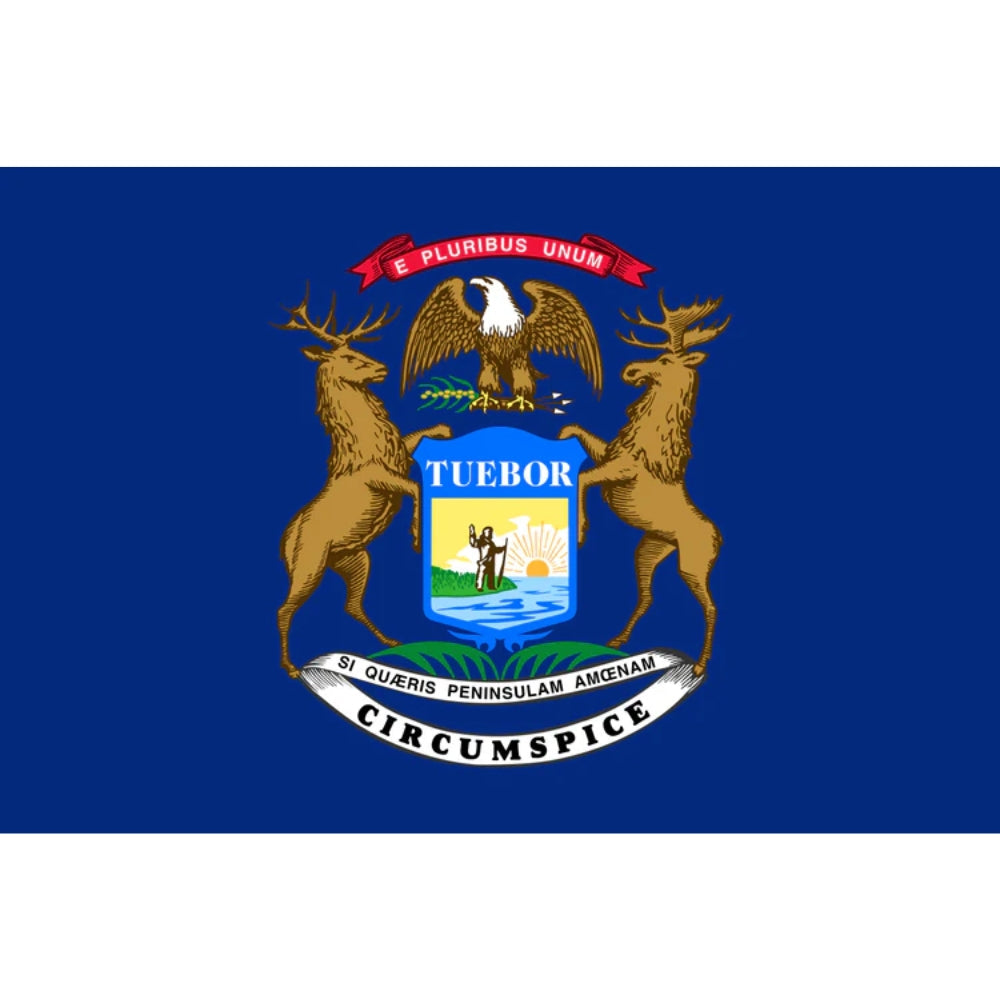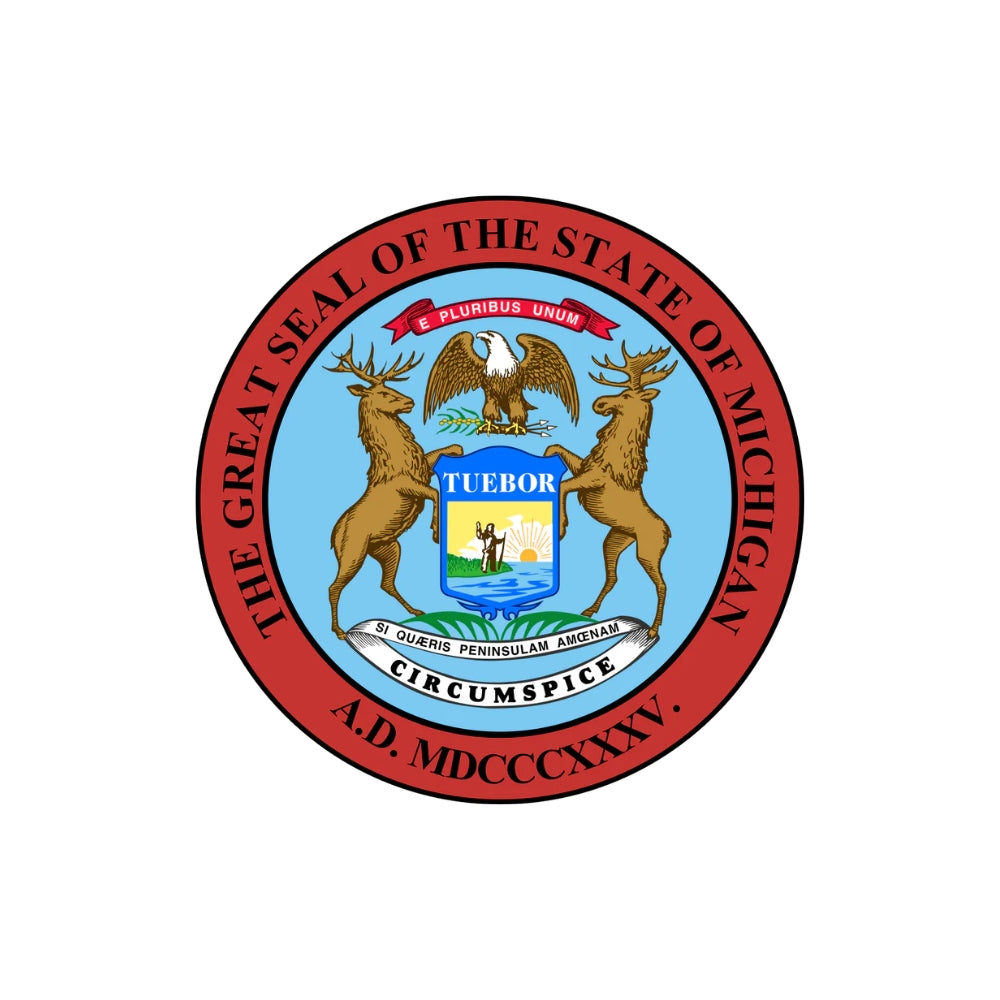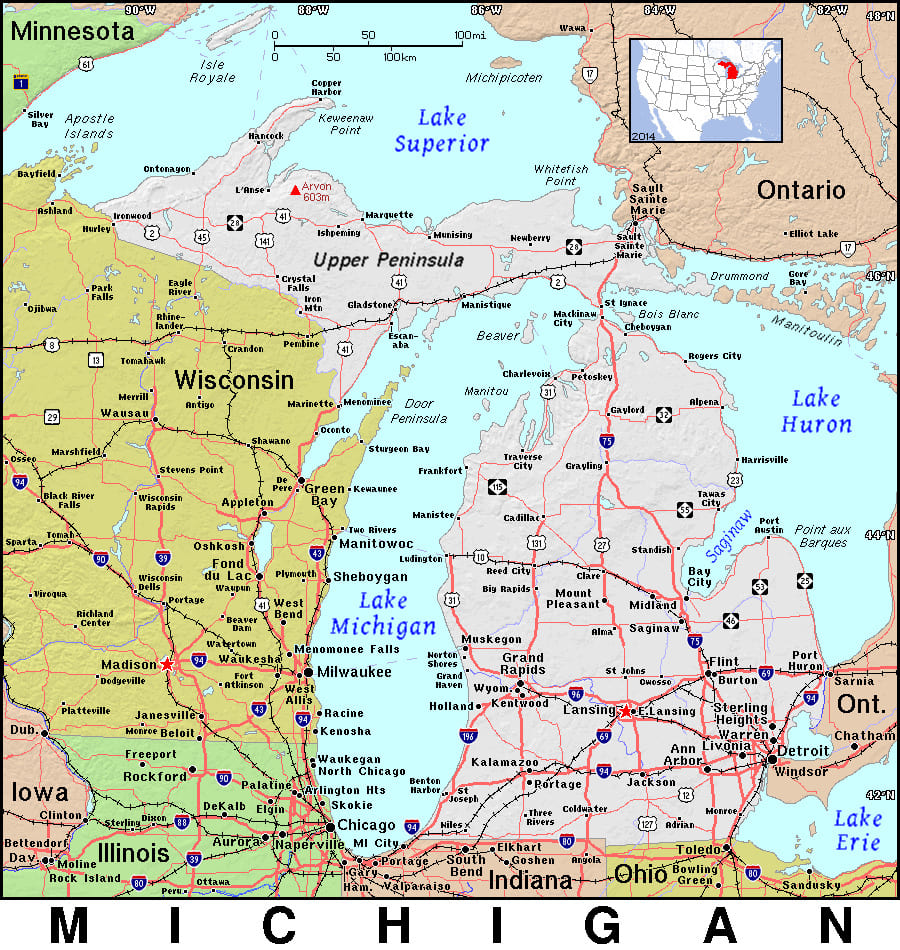Explore the Fascinating History of Michigan
Take our Michigan Trivia Quizzes for a Chance to Win a 6-Month Subscription to History By Mail!

The History of Michigan
Journey Through Michigan Trivia
Welcome to our Michigan history and trivia page, presented by History By Mail. Join us as we explore the rich past and fascinating culture of the Great Lakes State. From Motown to the Mackinac Bridge, we'll dive into some of Michigan's best-kept secrets and test your knowledge with fun quizzes. Let's start our journey through Michigan's history and trivia together.
The State of Michigan is a fascinating place with a rich history and unique cultural heritage. From the early days of French fur traders and Native American tribes to the rise of the automobile industry and the city of Detroit, Michigan has played an important role in shaping American history. Today, the state is known for its beautiful natural scenery, vibrant cities, and friendly people.
Facts about Michigan
State Name: Michigan
State Abbreviation: MI
Capital: Lansing
Name Origin: The word "Michigan" is derived from the Ojibwe word "mishigamaa," which means "large lake" or "large water."
Nickname: Great Lakes State, Wolverine State, Water Wonderland
Statehood: Janunary 26, 1837 (26th)
State Motto: "Si quaeris peninsulam amoenam circumspice," which is Latin for "If you seek a pleasant peninsula, look about you."

Michigan's Flag
The Michigan state flag was adopted in 1865 and features the state's coat of arms on a blue field. The reverse side displays the US coat of arms. The design was recommended by Adjutant-General John Robertson and approved by Gov. Crapo. The blue represents the Great Lakes, while the coat of arms symbolizes Michigan's heritage. The flag was first unfurled at the Gettysburg National Cemetery in 1865.
Michigan's Great Seal
Designed in 1835 by Lewis Cass, the former territorial governor of Michigan, the state's magnificent seal bears distinctive symbolism. The centerpiece is a shield depicting a man alongside a lake, holding a firearm while extending his hand in a gesture of peace. The upper edge of the shield is adorned with the motto "Tuebor" (I Will Defend). Positioned above the shield is a crest featuring an American eagle and the U.S. motto "E Pluribus Unum" (One Out of Many). Below, a banner displays the state motto "Si Quaeris Peninsulam Amoenam, Circumspice" (If You Seek a Pleasant Peninsula, Look About You). Anchoring the imagery are an elk and a moose. This coat of arms is encompassed by the words "The Great Seal of the State of Michigan A.D.MDCCCXXXV," representing the year of adoption in Roman numerals, 1835.

--- State Trivia #1 ---
History of Michigan
History of Michigan dates back to at least 12,000 years when the first inhabitants arrived. Native American tribes, including Kickapoo, Miami, Ojibwe, Potawatomi, Menominee, and Fox and Sauk, lived on the land for centuries.
Today, 11 Native American tribes still live in Michigan. In the early 17th century, French explorers arrived in the area and France controlled the land until the mid-1700s when England defeated the country in the French and Indian War. In 1805, Michigan became a U.S. territory, and settlers began arriving in large numbers in 1825, after the completion of the Erie Canal. In 1837, Michigan joined the Union as a free state.
In the late 1800s, automakers Ransom E. Olds and Henry Ford built some of the first cars in Detroit, earning the city the nickname "Motor City." Today, Michigan is still a hub of automotive manufacturing.
State Symbols
Fun Facts
- The Mackinac Bridge, which connects the Upper and Lower Peninsulas of Michigan, is one of the longest suspension bridges in the world, measuring 26,372 feet in length.
- Michigan has the longest freshwater coastline of any state in the country, with 3,288 miles of shoreline along the Great Lakes.
- The Kellogg Company, maker of Kellogg's cereal, is headquartered in Battle Creek, Michigan.
- Michigan is known as the "Wolverine State," but it's actually quite rare to spot a wolverine in the wild. The University of Michigan's sports teams are called the Wolverines, but the animal itself is rarely found in the state.
- Detroit, Michigan is known as the birthplace of the American automotive industry, with both Ford Motor Company and General Motors headquartered in the city.
--- State Trivia #2 ---

Things To Do in Michigan
- Visit Mackinac Island: This charming island is located between Michigan's upper and lower peninsulas and is accessible by ferry. Visitors can explore the historic downtown area, take a carriage tour, and sample the famous fudge.
- Discover the Great Lakes: With four of the five Great Lakes bordering Michigan, there are plenty of opportunities to enjoy the water. Whether you're swimming, boating, fishing, or just soaking up the sun on one of the many beaches, there's something for everyone.
- Explore Sleeping Bear Dunes National Lakeshore: Located on the eastern shore of Lake Michigan, this park is home to towering sand dunes, scenic overlooks, and miles of hiking trails. It's a great place to get active and enjoy the natural beauty of Michigan.
- Visit Detroit: Known as the "Motor City," Detroit is a hub of culture, history, and entertainment. Visitors can check out museums, enjoy live music, sample local cuisine, and explore the city's revitalized downtown area.
- Experience the Mackinac Bridge: This five-mile suspension bridge connects Michigan's upper and lower peninsulas and offers stunning views of the Great Lakes. Visitors can walk or bike across the bridge or take a scenic drive to experience this engineering marvel.

General Map of Michigan
Michigan is known as the Great Lakes State, bordered by four of the five Great Lakes, and shares its borders with Indiana, Ohio, Wisconsin, and Canada. It has two distinct parts: the Upper Peninsula, which is forested with low hills and the Lower Peninsula, which is mostly flat with some hills in the north and has thousands of miles of shoreline. Michigan has over 40% of its area covered in water, making it the state with the most water coverage. Additionally, Michigan has islands, including the Isle Royale, a national park in the middle of Lake Superior.
Famous People From Michigan
--- State Trivia #3 ---
FREQUENTLY ASKED QUESTIONS (FAQ) ABOUT MICHIGAN
The word "Michigan" is derived from the Ojibwe word "mishigamaa," which means "large lake" or "large water."
Michigan joined the Union as the 26th state on January 26, 1837.
The capital of Michigan is Lansing.
Michigan, particularly Detroit, is known as the birthplace of the American automotive industry, with notable automakers like Ford Motor Company and General Motors headquartered in the city.






